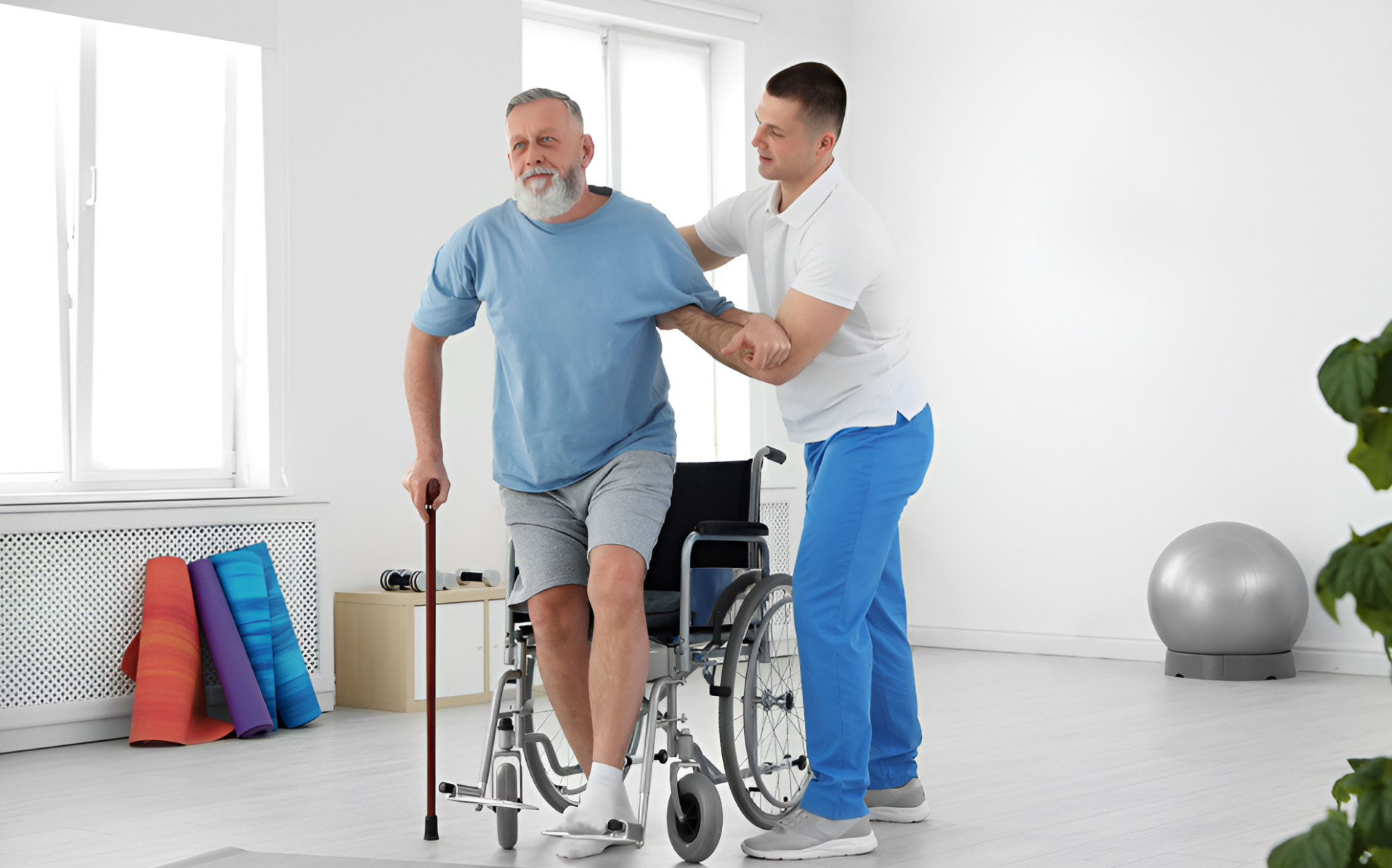
A stroke is defined as the disruption of the supply of oxygen and nutrients to the brain from the bloodstream. This can lead to various issues in the brain and a series of complications, which are expressed in movement disorders, speech difficulties, and cognitive and psychological problems.
These are as follows: Depending on the area and the degree of brain damage, the above impairments may range from mild to severe. Even though initial brain stroke treatment is significant in the first days after a stroke, neurorehabilitation is the critical determinant of a patient's outcomes and quality of life.
Consequently, the matter of time becomes crucially important in cases of stroke, as the earlier the start of the rehabilitation, the better. Starting neurorehabilitation soon after the onset of the disease is important as it could recover the brain’s function by bringing about physiological changes in the brain, which is known as plasticity. It has been observed earlier that early initiations of rehabilitation after the occurrence of a stroke offer favorable results.
Neurorehabilitation is a specific kind of therapy that is conducted for patients suffering from brain and nervous system-related injuries. It implies a cohesive team with professionals such as therapists, doctors, nurses, and psychologists who approach every aspect of physical, cognitive, and psychological problems that affect stroke survivors.
Key components of neurorehabilitation include:
Physical therapy specializes in strengthening exercises, patients’ stabilization, coordination, and the overall locomotor system.
Occupational therapy: Assists people to be in control of their lives again and perform basic activities of daily living, including dressing, bathing, and cooking or preparing food.
Speech therapy covers spoken language disorders, speaking, understanding, and swallowing issues.
Cognitive rehabilitation aims at impairing memory, attention, and approaches to problem solving and decision-making processes.
Emotional support: Support them through counseling services to enable them to deal with the emotional issues occasioned by stroke.
New approaches to neurorehabilitation use modern technologies and the achievements of modern neurology. These include:
Robotics: Robotic devices in particular can help in doing physical therapy exercises as they are able to offer a repetitive and intensive workout.
Virtual reality: It is also established that cognitive and physical therapy can be delivered through IVR environments.
Brain stimulation: There are methods like TMS and tDCS that can aid in increasing brain plasticity.
Constraint-induced therapy: This particular therapy is an intensive therapy aimed at rehabilitating the affected limb through the adoption of forced use.
The ability to regain capabilities diminishes with the help of rehabilitation after a stroke; it is a process, and people’s outcomes can be different. The three things that one has to endure include patience, and most of all, perseverance and support from loved ones. Neurorehabilitation is one of the pillars of this process, which can significantly alleviate the consequences of a stroke and increase the quality of life for its victims.
Therapy and attitude need to be consistent, and the treatment should begin as soon as possible in order to provide the best results.
Specifically, several reputed stroke rehabilitation facilities are available in Bangalore, which serves as the state’s medical capital. Such facilities offer all-rounded services where there is the use of advanced technology in conjunction with expertise.
A well-equipped stroke rehabilitation center should offer:
Comprehensive stroke care includes acute care, recovery, follow-up, and treatment services, which comprise rehabilitation and chronic care.
Stroke rehabilitation is a multifaceted and lengthy process that calls for distinctive patient attention. New treatments for acute stroke have been developed, but neurorehabilitation is still the primary therapeutic tool for stroke survivors’ rehabilitation and quality of life enhancement. Thus, medical knowledge combined with modern treatment approaches and patients' determination is a ray of hope for stroke victims, as rehabilitation centres can be observed in Bangalore.
This is why early intervention as well as therapy are important, as they help maximize the recovery that is possible. Yes, with commitment and proper attention, most people who experience a stroke can live a normal life and be self-reliant. It is also useful to note that each client can follow the stroke treatment programme differently; the pace of progress depends on him. But this is where, with good support and the necessary resources, one is bound to see improved results.
Q1: What is neurorehabilitation?
A: Neurorehabilitation is a form of therapy that involves working on the prognosis of brain diseases such as stroke.
Q2: What are the reasons for early rehabilitation after a stroke?
A: Prompt intervention in rehabilitation lays the foundation on enhanced recovery of the affected aspects of the brain.
Q3: What is the recovery time for stroke patients?
A: The time that it takes for stroke patients to begin their recovery usually begins immediately after the stroke while the complete recovery process might take a long time, six months and above.Healing time is crucial, as the recovery process may range from several weeks to a few years depending on the intensity of the stroke and the recovery incidence.
Book an Appointment
Call Us09035030623